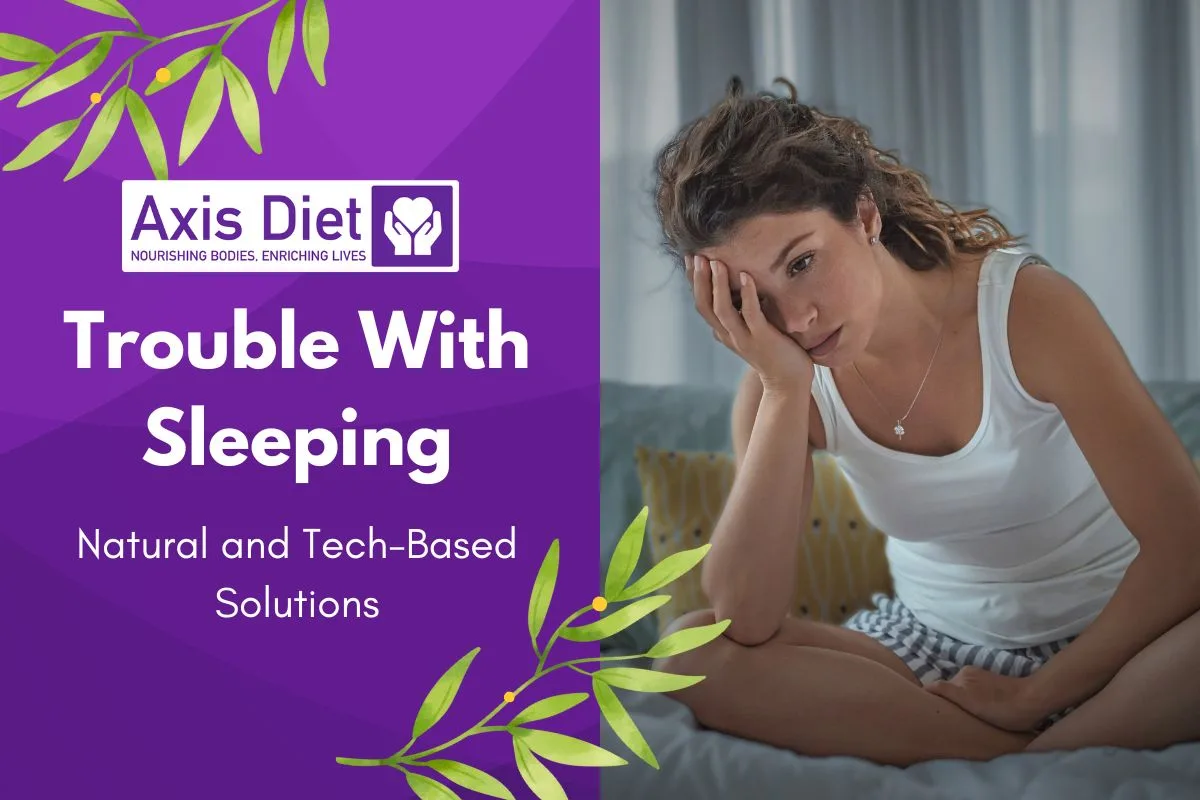Are you tossing and turning at night, struggling to escape the clutches of sleeplessness? Does the quest for a peaceful night’s slumber feel like an elusive dream? If so, you’re not alone. In our fast-paced, screen-saturated world, achieving restful sleep has become a challenge for many.
What exactly defines a good night’s sleep, and why does it seem so hard to attain? Could the answer lie in the fusion of nature’s wisdom and modern technology? In this exploration, we delve into these pressing questions, seeking answers and solutions.
If you’ve ever found yourself watching the clock tick past midnight, wondering why sleep evades you, or if you’re curious about natural and tech-based remedies that could guide you into the arms of Morpheus, this article is for you. Join us as we unravel the mysteries of nocturnal bliss and discover pathways to a restful night.
What Counts As a Good Night’s Sleep?
Understanding Sleep Cycles
A good night’s sleep isn’t just about the number of hours you spend in bed; it’s about the quality and structure of that sleep. Our sleep is divided into cycles, each consisting of stages like light sleep, deep sleep, and REM (Rapid Eye Movement) sleep. These stages are crucial for various restorative processes in the body. Typically, a complete sleep cycle lasts about 90 minutes, and a healthy adult requires 4-6 of these cycles per night. This means that the ideal sleep duration can range from 7 to 9 hours, but it’s the uninterrupted progression through these cycles that truly defines restorative sleep.
Quality Over Quantity of Sleep
The concept of ‘sleep quality’ is as important as how long you sleep. High-quality sleep involves spending enough time in deep sleep and REM stages, where the body and mind undergo most of their healing and rejuvenation. Signs of good sleep quality include falling asleep within 30 minutes or less, sleeping through the night with minimal disruptions, and feeling refreshed upon waking. Conversely, frequent awakenings or prolonged periods of wakefulness during the night can significantly impair sleep quality, regardless of total sleep duration.
The Impact of Sleep on Health
The effects of a good night’s sleep extend far beyond simply feeling rested. Quality sleep is linked to numerous health benefits, including enhanced cognitive function, emotional regulation, and physical health. It plays a critical role in memory consolidation, processing of emotions, and restoration of physical energy. Poor sleep, on the other hand, is associated with a range of issues like weakened immune response, increased stress levels, and higher risks of chronic conditions such as obesity, diabetes, and heart disease. Therefore, understanding and prioritizing good sleep is not just about overcoming tiredness; it’s a crucial aspect of overall health and well-being.
Why Is Sleeping So Difficult?
The Modern Lifestyle Challenge
In the age of technology and constant connectivity, our daily habits have evolved in ways that are often counterproductive to good sleep. The blue light emitted by screens can interfere with our circadian rhythms, the natural sleep-wake cycle. Additionally, the fast-paced lifestyle and stress associated with work, social obligations, and information overload can keep our minds active and restless, making it difficult to wind down and fall asleep.
Dietary and Physical Influences
Our eating habits and physical activity levels significantly impact sleep quality. Consuming caffeine or heavy meals close to bedtime can disrupt sleep. On the other hand, lack of physical activity can lead to a build-up of energy and tension, which also hampers the ability to sleep well.
Psychological Factors
Anxiety, stress, and overthinking are some of the most common psychological barriers to a good night’s sleep. These factors can lead to a hyperaroused state, where the mind is constantly on alert, preventing deep and restorative sleep.
Environmental Disruptions
An uncomfortable sleep environment, such as a room that’s too hot, cold, noisy, or bright, can also make sleeping difficult. The quality of your mattress and pillow, the room’s temperature, and noise levels all play a critical role in how well you sleep.
Health-Related Issues
Certain health conditions, like sleep apnea, restless leg syndrome, chronic pain, or mental health disorders, can significantly disrupt sleep patterns. Medications used to treat other conditions can also have side effects that affect sleep quality.
Which Sleep Tricks Can Help?
Progressive Muscle Relaxation (PMR)
How it Works: PMR helps in reducing physical tension and mental stress, promoting relaxation. By consciously tensing and then relaxing muscle groups, it becomes easier to recognize and release physical stress, aiding in the transition to sleep.
Steps to Follow:
- Tense and Relax: Start with your facial muscles, then progressively move down through the body, tensing each muscle group for about 5-10 seconds before releasing.
- Breathing: Combine each tension-relaxation step with deep, slow breaths to enhance relaxation.
- Mindfulness: Focus on the sensation of release in each muscle group as you progress.
Visualization Technique
How it Works: Visualization or guided imagery involves creating calming, peaceful images in the mind. This process shifts focus away from stress or anxious thoughts, promoting relaxation.
Steps to Follow:
- Choose a Scene: Imagine a place or scenario that you find serene and relaxing.
- Engage Senses: Incorporate all senses – sight, sound, smell, touch, and taste – to deepen the experience.
- Deep Breathing: Pair the visualization with deep, slow breathing to enhance relaxation.
Aromatherapy
How it Works: Aromatherapy uses natural plant extracts, like essential oils, to promote health and well-being. Certain scents like lavender and chamomile can induce relaxation and improve sleep quality.
Steps to Follow:
- Choose a Scent: Use relaxing scents like lavender, chamomile, or sandalwood in a diffuser or as a spray.
- Inhale Deeply: Breathe in the scent deeply for several minutes as part of your bedtime routine.
- Combine with Relaxation Techniques: Use aromatherapy in conjunction with other relaxation techniques like deep breathing or meditation.
Controlled Breathing
How it Works: Controlled breathing, particularly pranayamic breathing, is an ancient practice rooted in the idea that regulating one’s breath can significantly calm the mind and body. This method is effective because it directly influences the nervous system, shifting it from a state of alertness to one of relaxation.
Steps to Follow:
- Inhale: Begin by inhaling slowly and deeply through your nose, allowing your lungs to fill completely.
- Exhale: Gently exhale through your mouth, releasing the air and any tension.
- Count: With each inhale and exhale, count your breaths. This counting serves as a focal point, keeping your mind engaged in the breathing process and away from stress-inducing thoughts.
Sleep-Friendly Lighting
How It Works: Sleep-friendly lighting solutions, such as smart bulbs or lamps, emit a warmer spectrum of light that doesn’t interfere with melatonin production, thus promoting better sleep.
Steps to Follow:
- Install Smart Lighting: Replace standard bulbs with smart bulbs in your bedroom.
- Set Schedules: Program the lighting to dim or change color temperatures closer to bedtime.
- Control Remotely: Use a smartphone app or voice commands to adjust lighting as needed for optimal sleep conditions.
iOS Wind Down and Sleep Mode
How It Works: The Wind Down feature on iOS devices helps you establish a bedtime routine, gradually preparing your mind and body for sleep. Sleep Mode simplifies your Lock Screen and turns on Do Not Disturb to minimize distractions.
Steps to Follow:
- Set Up Wind Down: Go to the Health app, set your desired bedtime and wake-up time, and activate Wind Down for a period before bedtime.
- Customize Wind Down Shortcuts: Add relaxing activities like meditation or reading to your Wind Down routine.
- Enable Sleep Mode: Sleep Mode will automatically activate during your Wind Down period, dimming your screen and activating Do Not Disturb.
- Review Sleep Analysis: Use the Health app to review your sleep trends and make adjustments as needed.
Relaxation Apps
How It Works: Relaxation apps offer a range of features such as guided meditations, calming music, and ambient sounds to help users relax and prepare for sleep.
Steps to Follow:
- Download an App: Choose an app with relaxation features you find appealing.
- Create a Routine: Incorporate using the app into your nightly routine, such as listening to calming sounds or guided meditations before bed.
- Customize Settings: Adjust the app settings to suit your preferences, such as timer duration and sound choices.
Smart Mattresses and Pillows
How It Works: Smart mattresses and pillows are equipped with technology that can track sleep patterns, adjust temperature, and even change firmness based on your sleep position, enhancing overall sleep quality.
Steps to Follow:
- Select a Product: Choose a smart mattress or pillow that meets your specific sleep needs.
- Set Preferences: Customize settings such as temperature control and firmness as per your comfort.
- Monitor Sleep: Use the associated app to track your sleep patterns and make adjustments for better sleep quality.
Conclusion
In conclusion, achieving a good night’s sleep is a multifaceted endeavor that encompasses understanding what constitutes quality sleep, addressing the various challenges that can hinder it, and employing both natural and technological strategies to enhance it. From embracing relaxation techniques and herbal remedies to leveraging technology like sleep apps and smart bedding, each approach offers unique benefits. By exploring these methods and finding the right balance tailored to individual preferences and lifestyles, one can significantly improve their sleep quality, leading to improved health and a more fulfilling life. Remember, the journey to better sleep is personal and can require a blend of different strategies for optimal results.
Please note that the information provided in this article is for informative purposes only. Sleep experiences and effectiveness of various techniques can vary significantly from person to person. While the strategies discussed can be beneficial for many, they may not address all types of sleep disturbances or more severe insomnia conditions. If you are experiencing persistent sleep difficulties or insomnia, it is important to consult with a healthcare professional for a more personalized approach and treatment. Always consider professional advice when dealing with health-related issues.





